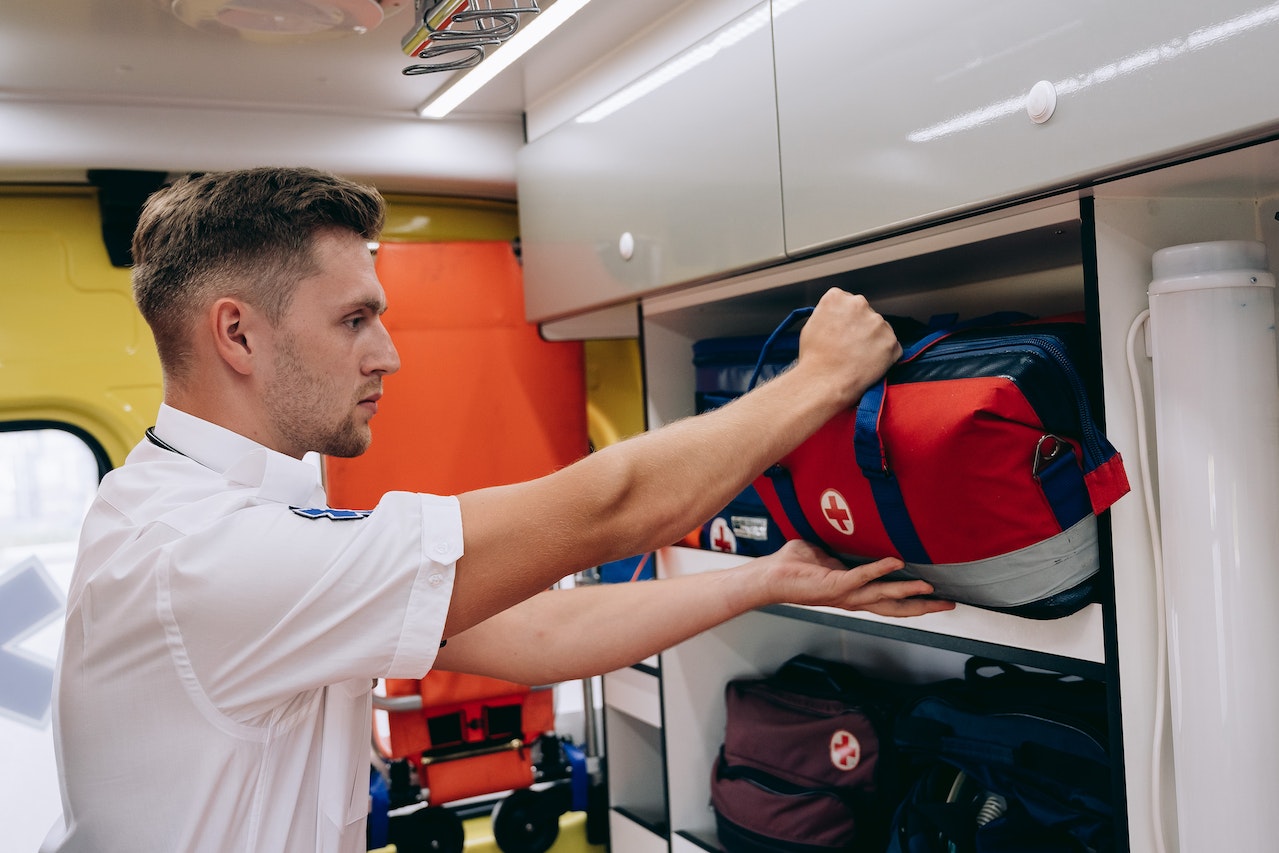
Minor burns are one of the most common types of household injury – who among us hasn’t accidentally touched an iron someone left out or splashed some hot water on their hand? Take some time to brush up on first aid for minor burns before your next household mishap, and while you’re at it, learn when you should call in professional medical help straight away and what you should definitely not do.
When Do I Need Immediate Medical Help For A Burn?
Burns are categorized as first, second, third, and sometimes even fourth degree based on how deep they go under the surface of your skin, but you don’t really need to know about that. All you need to know is how to tell if a burn is serious enough to require immediate medical help.
How To Tell Superficial Burns From Deep Burns
A superficial burn is red and painful, and there may be some blistering and swelling. A deep burn may be red too, but it may also look white or charred. It seems counter-intuitive, but a deeper burn may also be less painful than a superficial one because the damage is bad enough that the nerve endings have been destroyed. Of course, having a doctor look at your burn is always a good idea, but when do you need medical attention straight away?
Seek Medical Help For A Burn Immediately If:
- The burn is deep at any point, even if it’s painless – third-degree burns, which go through the layers of skin down to the fat underneath, are often painless because they’ve destroyed the nerves
- A burn is superficial, but larger than one or two inches
- A baby or child is burned
- A person over the age of 60 is burned
- The person who is burned has a medical condition, like diabetes or heart disease
- The person who is burned has a weakened immune system
- A burn involves the face, hands, feet, or genitals
- The burned skin looks leathery or is brown, black, yellow, or white
- The burn was caused by chemicals or electricity rather than just heat
- There is a suspected burn or other inhalation injury involving the airway – if the person is having any trouble breathing, this may indicate an inhalation injury or damage to the heart in the case of an electrical burn or electric shock
- The person loses consciousness, even for a short period of time
- You are in any way unsure about the extent of the injury
First, Remove The Danger
If the person is still being burned, the most important thing is to remove them from the heat source – or the heat source from them, whichever can be done more quickly and safely. If the person is on fire, have them stop, drop, and roll:
- Stop them moving (running around can fan the flames).
- Get them to drop to the ground.
- Once they’re down there, roll them over and over to smother the flames before beginning first aid and calling an ambulance.
How To Treat A Burn At Home
Here’s how to perform first aid on the most common kind of burn, a thermal burn (one caused by too much heat). This includes burns resulting from contact with fire, hot surfaces like irons, and hot water (an injury caused by hot liquids is technically a scald, not a burn, but the treatment is the same).
- Put the burn under cool, running water for at least 20 minutes. The water will reduce the pain and swelling caused by the burn and lower the risk of scarring. Immersing the burned area in a container of water like a bowl or sink is not as good because the water will gradually take on the body’s warmth and become less cool.
- Remove any jewelry or anything that may cause constriction – IF it is possible to do this without causing damage to the burned area. Don’t try to take anything off if it shows signs of sticking.
- Remove any wet clothing on the burned skin as long as it isn’t stuck. Wet clothing can retain heat, and as the person is gradually cooled by the water running over the burn, it can also contribute to hypothermia.
- Cover the burned area with plastic cling wrap (do it loosely so it has space to swell). This helps prevent infection by keeping the area clean and reduces the pain caused by air touching the burn. But be sure to discard the part of the wrap already sticking out of the pack (it may be contaminated by germs), and don’t leave it on for more than one hour.
- Cover up the areas that aren’t burned. People with burns are at risk of hypothermia because the damage to their skin impairs their skin’s ability to regulate their internal temperature. Try to keep the burn cool, but keep the person warm.
- Elevate the burned area above the level of the heart to minimize swelling if this is practical, for example, when the burn is on an arm or leg.
What NOT To Do To A Burn
- Don’t put ice or ice-cold water on it – this could damage the skin further.
- Don’t put butter or any other oily substance on it. Oils seal the heat in.
- Don’t put toothpaste on it.
- Don’t use any creams or ointments.
- Don’t deliberately pop any blisters.
Be Prepared
It’s a good idea to familiarize yourself with the basics of treating a burn ahead of time – you don’t want to be googling or looking through books when you or someone else is in pain. But the best way to prepare for burns or any other unexpected medical problem is to enroll in an accredited first aid course.
Interesting Related Article: “First Aid for Severe Allergic Reactions and Asthma Attacks“

